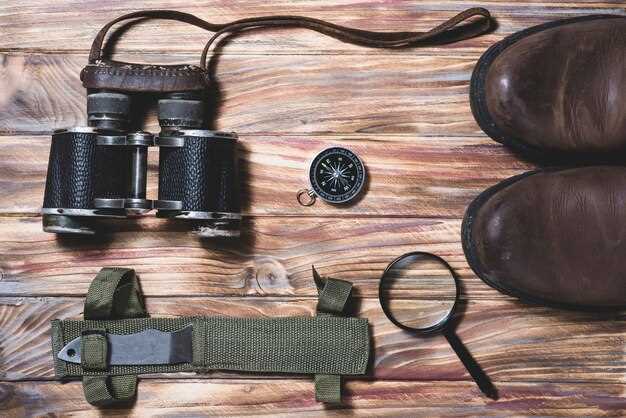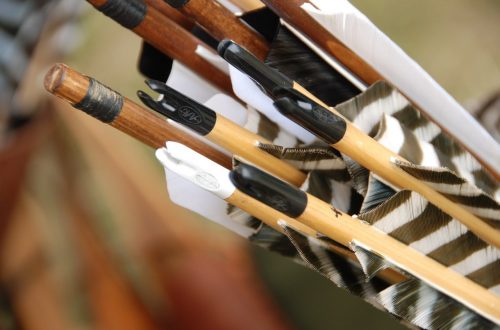
Top crossbow scopes and how to choose one

When it comes to enhancing accuracy and precision in hunting, crossbow optics play a pivotal role. Selecting the right scope can significantly impact your shooting performance, making it crucial to understand the various options available in the market. From helping to adjust for distance to improving target visibility in low-light conditions, quality optics are indispensable tools for every serious crossbow hunter.
Numerous factors must be considered when choosing the best crossbow scope. The magnification level, reticle style, and overall construction materials can vastly affect your experience in the field. Additionally, understanding the unique features of these optics, such as illuminated reticles and range-finding capabilities, can provide invaluable assistance in different hunting scenarios. Each feature caters to specific needs, thus requiring hunters to carefully assess what works best for their personal hunting style.
In this article, we will delve into some of the top crossbow scopes available today and offer essential tips for making an informed selection. Whether you are an experienced hunter or just starting, finding the ideal crossbow optics can elevate your hunting game, ensuring you have the best chances of success on your next hunt.
Key Features to Look for in Crossbow Scopes

When selecting a crossbow scope, hunters should prioritize several essential features to enhance accuracy and overall performance. First and foremost, optics quality is vital. High-quality glass will provide clearer images and better light transmission, especially during low-light conditions. Look for fully multi-coated lenses that reduce glare and improve brightness.
Another critical factor is magnification. The ideal scope should offer a suitable magnification range for your hunting environment. A lower magnification (e.g., 1x to 4x) is advantageous for close-range shots, while a higher magnification (up to 6x or more) can be beneficial for targeting distant game. Finding a balance is crucial.
Reticle design also plays a significant role in crossbow scopes. A clear, intuitive reticle helps in quick target acquisition and enhances shooting precision. Options like illuminated reticles can be beneficial in low-light situations, providing better visibility without straining the eyes.
Durability cannot be overlooked. Crossbow scopes must withstand harsh outdoor conditions, so choose models that are shockproof, waterproof, and fog-proof. A rugged construction ensures reliable performance in various environments, allowing hunters to focus on their targets without worrying about their equipment.
Lastly, consider the adjustment controls. Reliable windage and elevation adjustments should be easy to manipulate, allowing you to make precise corrections as necessary. Look for scopes with tactile clicks for positive feedback, which aids in making quick adjustments under pressure.
How to Choose the Right Magnification for Your Hunting Needs
Choosing the right magnification is crucial when selecting a crossbow scope, as it directly affects your shooting accuracy and success in the field. Understanding your hunting environment and the distance at which you plan to shoot will guide your decision.
Consider Your Hunting Environment: The type of terrain you’ll be hunting in plays a significant role in determining the appropriate magnification. For open fields, higher magnification scopes (such as 4-12x) can be advantageous, allowing you to see distant targets clearly. Conversely, in dense woods or brush, lower magnification (like 1-4x) is usually sufficient. This enables quicker target acquisition and minimizes the chance of obstructing your view due to foliage.
Evaluate Your Shooting Distance: The maximum distance you expect to shoot is another essential factor. If you primarily hunt within 20-30 yards, a low magnification scope (under 5x) is often sufficient. However, if you frequently take shots at longer ranges, consider a scope that offers 10x magnification or more. Ensure that the optics provide a clear image at the distances you intend to hunt.
Understand the Importance of Field of View (FOV): A scope with higher magnification typically has a narrower field of view, which can make it challenging to track fast-moving animals. If your hunting style involves moving around or if you pursue fast game, prioritize scopes that balance magnification with a decent field of view, allowing you to maintain situational awareness.
Check for Optical Quality: Regardless of magnification, the quality of the optics is critical. A high magnification scope with poor glass will deliver a distorted image, making it difficult to spot targets. Look for scopes with fully multi-coated lenses for optimal light transmission and clarity.
Make Adjustments Based on Personal Preference: Ultimately, the ideal magnification can vary based on personal comfort and experience. Some hunters find that lower magnifications enhance their shooting confidence and speed, while others prefer the precision of higher magnifications. Testing different scopes can help determine what feels best in your hands.
In summary, selecting the right magnification for your crossbow scope involves evaluating your hunting style, environment, and personal preferences. By considering these factors, you’ll be better equipped to make an informed decision that enhances your effectiveness in the field.
Tips for Maintaining and Adjusting Your Crossbow Scope

Maintaining and adjusting your crossbow scope is essential for achieving accurate shots. Regular inspection of the scope will help you identify any potential issues before your next hunting trip. Start by checking for any signs of physical damage, such as scratches on the lens or loose mounts. Keeping the lens clean is crucial; use a soft cloth and lens cleaner to remove dust and fingerprints without scratching the surface.
When it comes to adjustments, always ensure that your crossbow is properly zeroed. This process involves adjusting the scope’s windage and elevation settings to align with your crossbow’s point of impact. Begin by shooting at a close distance and make small adjustments based on your results. If your shots are grouping consistently, fine-tune your settings for better accuracy at longer ranges.
It’s also important to check the torque specifications of the rings and bases that hold your scope. Over-tightening can cause damage, while under-tightening may lead to scope misalignment. Use a torque wrench for precision in your adjustments.
Lastly, whenever your crossbow scope experiences significant temperature changes or prolonged periods of storage, always verify its settings. Environmental factors can affect the performance of your scope, so being diligent about checks and adjustments will enhance your hunting experience.




